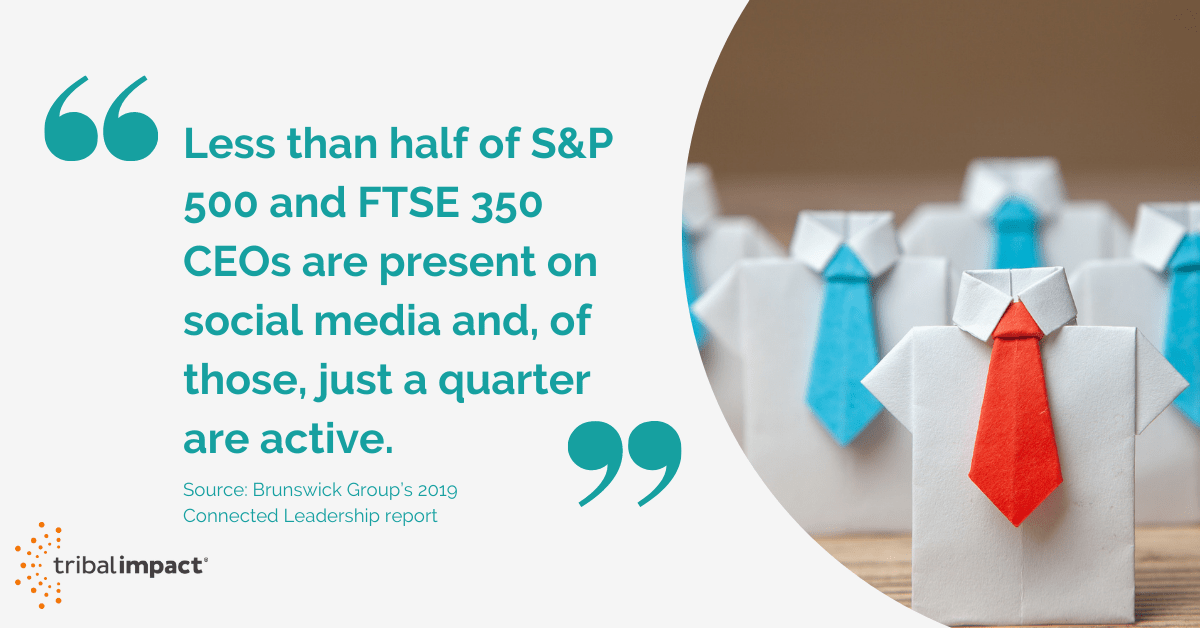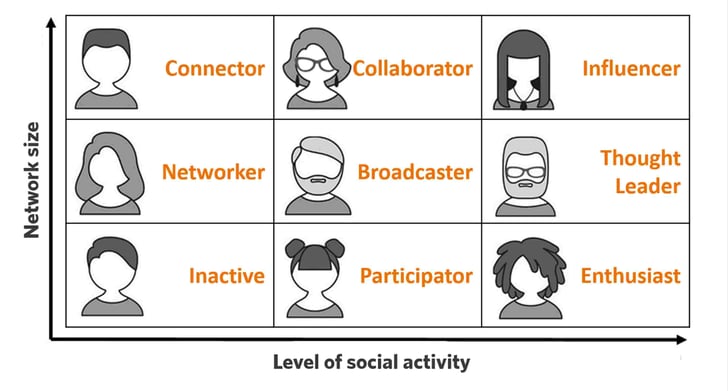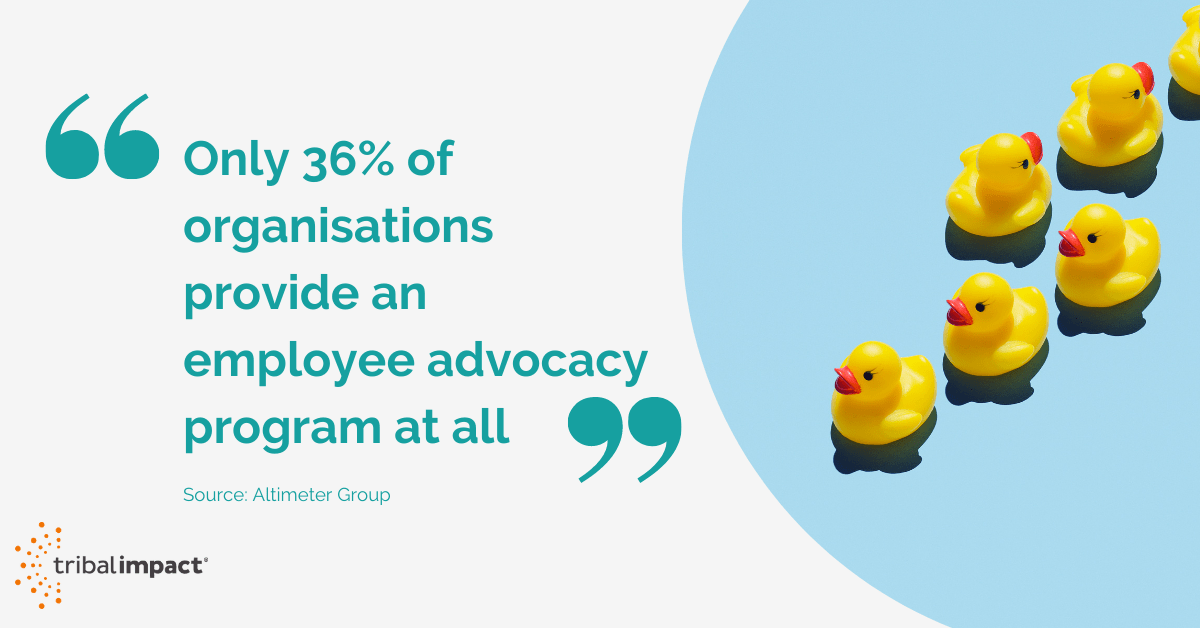Your employee advocacy program needs soul and it doesn’t matter how passionate you may be for it to be a success - it needs to be shared by your employees if it’s going to stay alive and thrive. You can attempt to fix it with better content or new social strategies but it'll only go skin-deep.
So if your adoption rates are falling short of the average adoption rates (which average 53% across all industries, according to a PostBeyond 2019 benchmark study), you should always look at why employees are uninterested.
Luckily, there are usually just three common culprits that stand in the way of your vision for a socially engaged workforce. Here’s what they are (and most importantly) how to overcome them.
Leadership Isn't Onboard With Your Employee Advocacy Program.
If the C-Suite aren’t onboard with a social business strategy, it sends a clear message to your employees that they don't see the value in it - that your employee advocacy program is another 'passing trend'.
It may be that they don’t have the skills to drive and execute digital transformation - less than half of organisations (48.8%) are ‘satisfied’ that their leadership has, according to the NTT’s Executive Guide 2019: Digital Means Business Benchmarking Report.
But it may be more about what they’re not saying or doing. As the NTT report says, it's one thing to say, 'we need to behave differently', but it's a superficial message if leadership don't change their mindsets and behaviours, such as aligning KPIs with the social strategy, providing a budget for advocacy training, or – perhaps the most telling – failing to be socially active themselves.

So how can you address the problem?
- Communicate the facts that support your vision and focus on what appeals to each executive. Our Social C-Site page is full of facts that can help you get leadership behind you, whether that's by appealing to ROI, employee attraction and engagement or even how they're perceived themselves.
- Start tracking your ROI metrics (if you’re not already doing so). It’s a very different matter to say, “This should work” to “This is working”. What you can feasibly give them depends on where you’re at in your program journey, so to see what you can report on see: Why Aren’t I Seeing Results? A Guide to EA metrics once your program is live.
- Help them see the results for themselves. The C-Suite tend to avoid social media, but you can provide even just one executive with one-to-one coaching and they see the positive results it brings, you should start to see buy-in from the rest of the board.
Your Employees Don’t Want To Be Advocates (or don’t see the value)
If LinkedIn research shows that the reach of an organisation’s employees’ is an average of 10x more than the corporate employer brand, then it seems to stand to reason that the more employees you can sign up, the better.
It's the opposite. If you don't select the right employees at the outset, then you risk diluting the resources you have, meaning you can focus less on the ones who show enthusiasm and promise.
If you’re wondering who you should focus your efforts on, we’ve created a Social Business Maturity Model which helps you plot where your employees lie within the nine stages of maturity and where they could get to with the right training.

Generally, here’s what you should look to identify to rule people in or out or advance them further in their journey:
- Inactives: Are they simply not interested or lacking in confidence?
- Connectors, Participators & Broadcasters: Is their ad-hoc approach down to lack of confidence or interest or do they need more targeted training?
- Networkers: Are their self-promotional content posts due to misdirected enthusiasm or is it just a box-ticking exercise?
- Collaborators & Enthusiasts: These employees show clear interest and the most promise. What are their goals: to become a Thought Leader or an Industry Influencer?
Once you've identified the motivations behind the behaviour you can either redirect your resources into those that are interested or invest in targeted training to address any adoption barriers. Then revisit again a few months' later time to see what's changed and what's not – then decide who to rule in or out again!
The Fear factor
Fear is what holds many employees back from using social media in their professional lives. Only 36% of organisations provide an employee advocacy program at all, according to Altimeter Group. So it's little wonder that even smooth-talking, charming "social butterflies" in real-life suddenly turn into the wallflower on social media newsfeeds.
- What if I get sacked for something I share?
- What if I look stupid?
- Do my friends and family Twitter followers really care about my professional views?
- Will I sound boastful?
The first step to address this fear is by providing a clear social media policy. Not one that will be relegated to a tenth-level folder of the intranet never to be read again, but an interactive one, that keeps people engaged and that tests their knowledge with real-life scenarios.
Find out more about what a social media policy that helps, not hinders your employees’ efforts should include here.

The second step is to provide targeted training that helps your employees at whatever stage of social media maturity they are at (once you’ve determined if they’re interested – see above).
We cover what this entails extensively in our eBook: How to reignite your employee advocacy program. But, in brief, your focus should be, "Train the masses, train the many, train the few".
One of the best ways to train the many who've moved beyond merely experimenting with your tool is to provide best-practice templates and demos, such as:
- Optimising your LinkedIn profile (we have a free eLearning course for this)
- Example responses for dealing with negative comments
- A ready-made list of relevant hashtags
- InMail connection request intros
- Examples of great post hooks
Once you've built the enthusiasm that drives the soul for your employee advocacy program, you've got the core in place to start implementing the social strategies that you've been eager to try out.
The headline tweaks and hooks that reel your audience in, the content testing and optimisation, and the training that takes people two or three levels up their current social maturity level.
